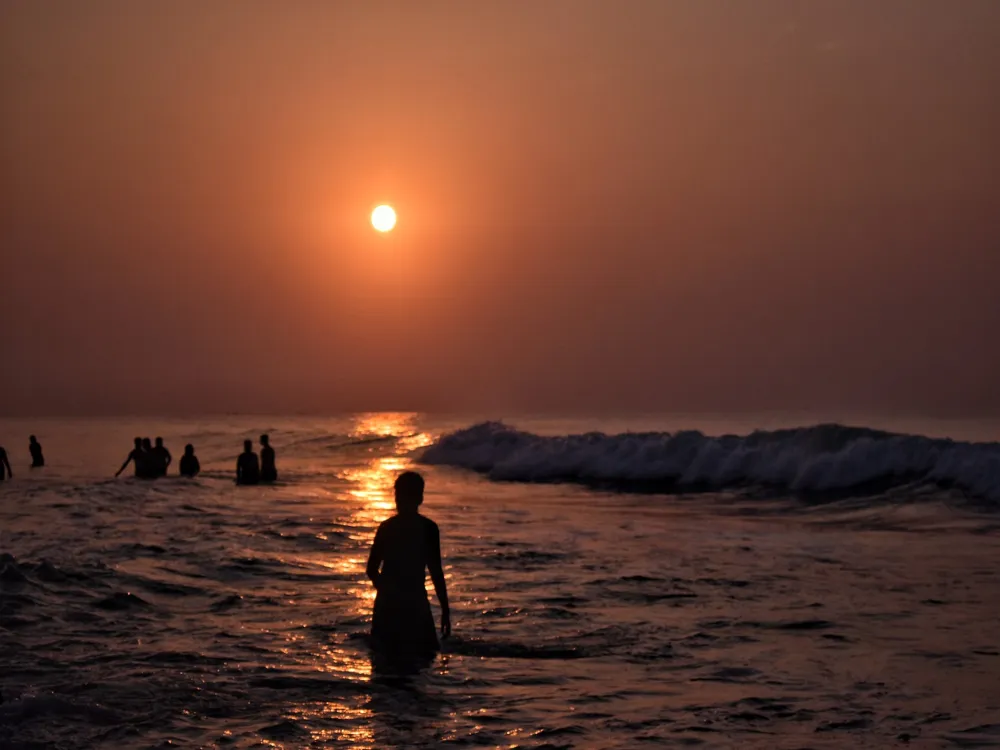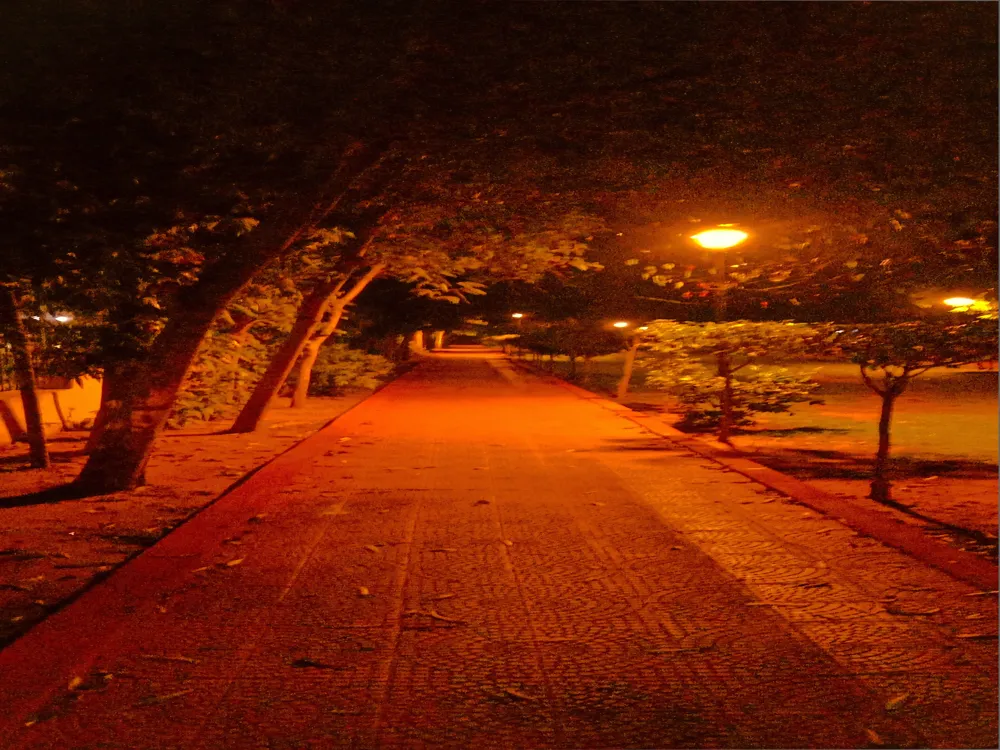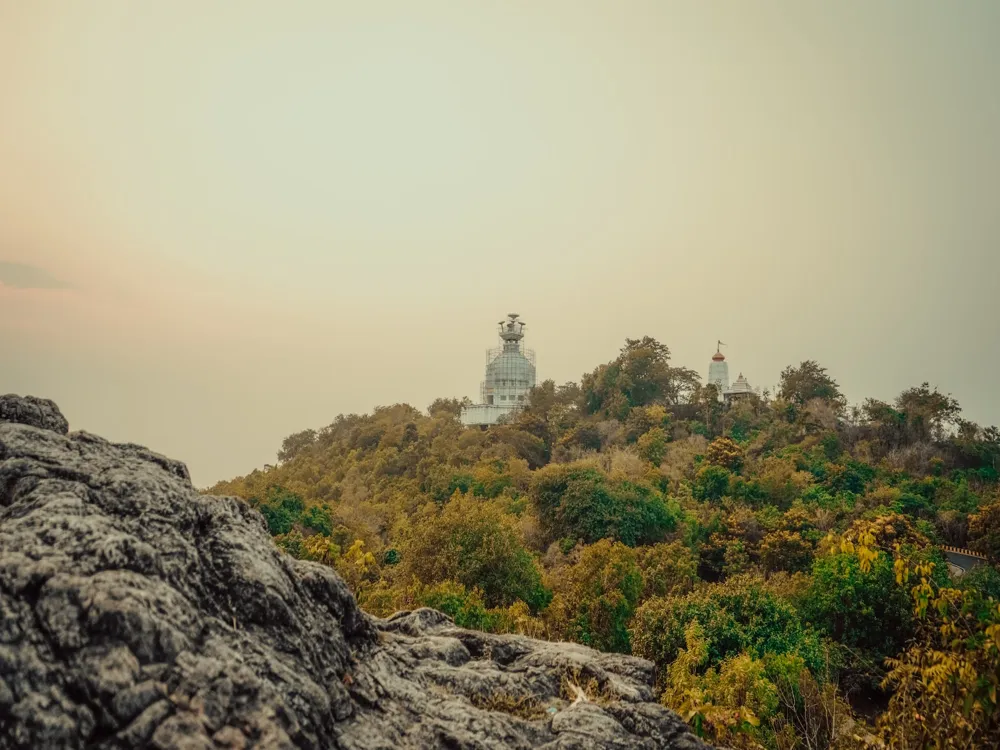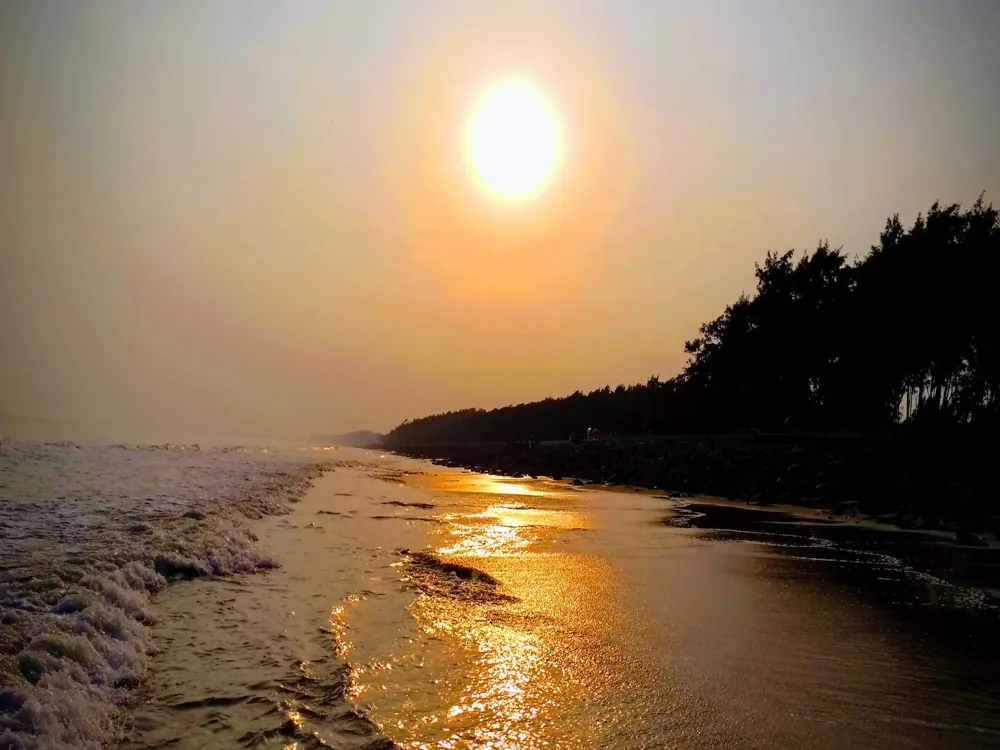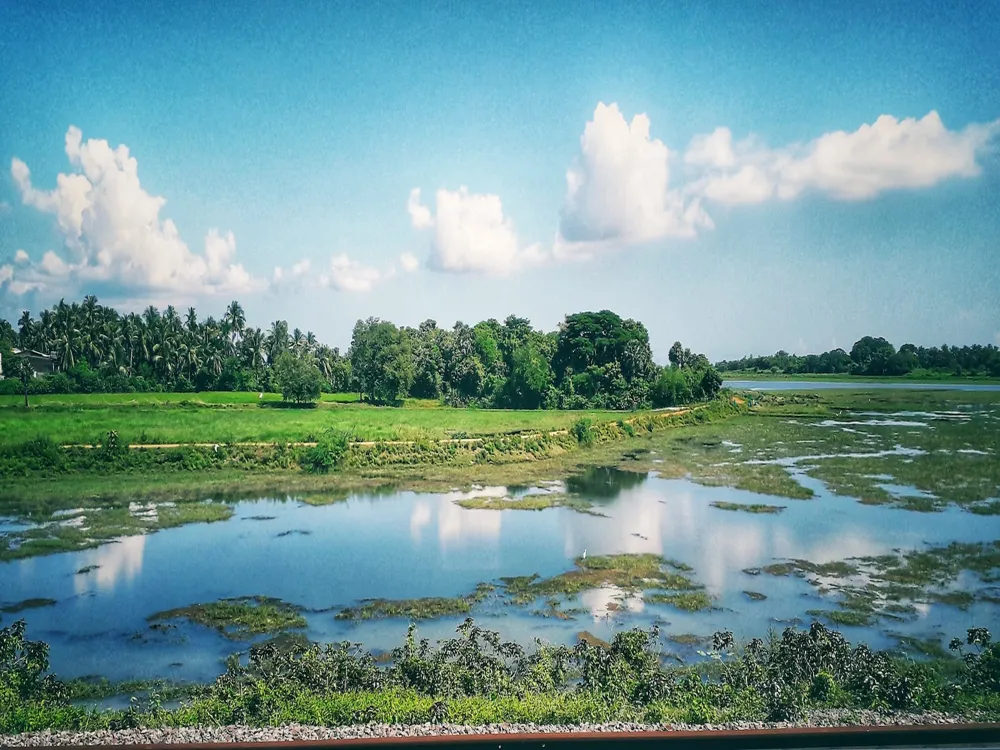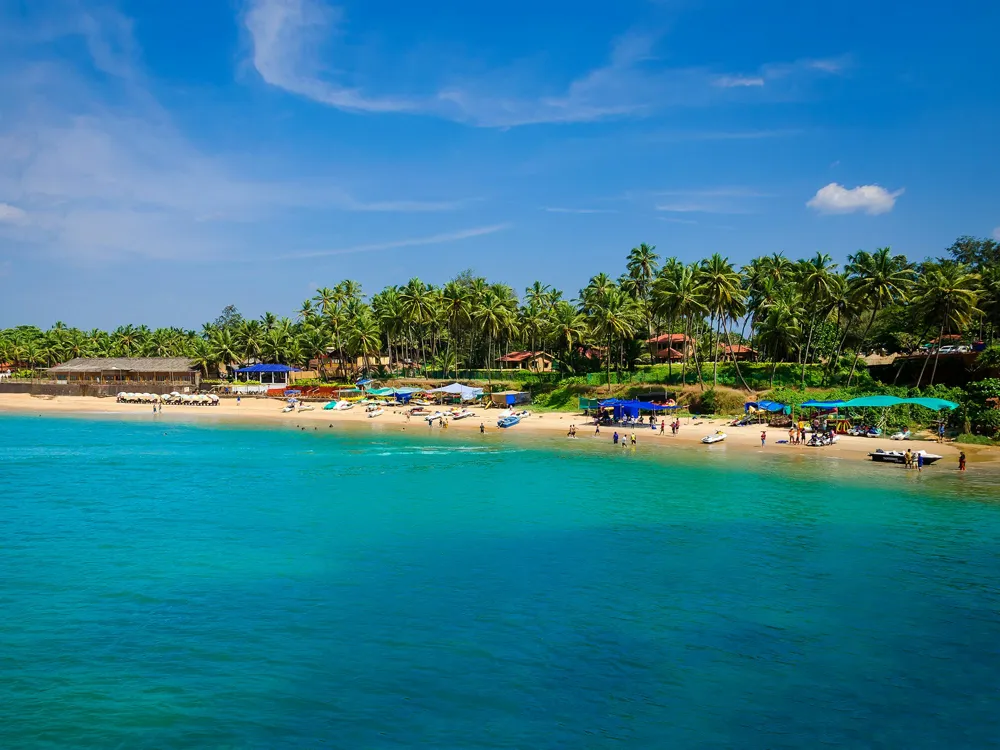Chandrabhaga Beach, located in the culturally rich state of Odisha, near the historic town of Konark, is not just a natural wonder but also a place steeped in mythological and historical significance. This serene beach, known for its panoramic views and pristine environment, is a haven for travelers seeking tranquility and a touch of the cultural essence of India. The beach's name, Chandrabhaga, is deeply entrenched in Hindu mythology and is believed to have been a place of worship for the sun god, Surya. The proximity of the beach to the architectural marvel of the Sun Temple in Konark makes it an even more compelling destination for tourists. The beach's history is as fascinating as its landscape. According to legends, Chandrabhaga was once a bustling river that flowed into the sea. It was here that Samba, the son of Lord Krishna, was cured of leprosy after praying to the sun god. This historical tale is celebrated every year during the Magha Saptami festival, attracting thousands of pilgrims who take a holy dip in the sea. The beach thus holds a special place in the hearts of the locals and continues to be a site of spiritual significance. The landscape of Chandrabhaga is characterized by its wide and clean shoreline, flanked by lush green vegetation and dunes. The gentle waves of the Bay of Bengal, combined with the soft, golden sands of the beach, create a picturesque setting. The beach is an ideal spot for witnessing breathtaking sunrises, which paint the sky in hues of orange and red. The serene ambiance of Chandrabhaga is a stark contrast to the bustling city life, offering a peaceful retreat for nature lovers and those seeking spiritual solace. In addition to its natural beauty and mythological importance, Chandrabhaga Beach is also an ecologically significant zone. The beach and its surrounding areas are a habitat for a diverse range of flora and fauna. The coastal ecosystem plays a crucial role in maintaining the balance of the local environment, making it an interesting study for ecologists and environmentalists. The cultural significance of Chandrabhaga is further accentuated by its proximity to the Sun Temple. The temple, a UNESCO World Heritage Site, is an epitome of ancient Indian architecture and is a major attraction for tourists visiting the beach. The intricate carvings and the historical importance of the temple make it a must-visit for anyone interested in Indian history and architecture. The beach also hosts a variety of activities for visitors. From leisurely strolls along the shore to exploring the local markets for handicrafts and souvenirs, there's something for everyone at Chandrabhaga. The beach is not only a place of natural beauty and cultural heritage but also a testament to the harmonious coexistence of man and nature. While Chandrabhaga Beach itself is a natural formation, its architecture, in a broader sense, refers to the way it has been preserved and maintained, along with its integration into the surrounding cultural and historical landmarks. The beach's architecture is not about buildings or structures, but rather about its natural landscape, the way it has been shaped by the elements over time, and how it interacts with the nearby Sun Temple and other historical sites. The natural architecture of Chandrabhaga Beach is characterized by its wide, open shoreline, which stretches for miles, offering a panoramic view of the Bay of Bengal. The golden sands of the beach are interspersed with patches of green vegetation, and the coastline is dotted with natural dunes, which play a crucial role in the beach's ecosystem. These dunes act as natural barriers against the forces of the sea and wind, protecting the inland areas. The integration of Chandrabhaga Beach with the Sun Temple of Konark is a unique aspect of its architecture. The temple, located just a few kilometers from the beach, is a marvel of ancient Indian architecture, built in the form of a gigantic chariot with elaborately carved wheels, pillars, and walls. The temple's design and orientation are such that the first rays of the sun strike the main entrance, a phenomenon that beautifully ties the beach to the temple, both spiritually and visually. The architectural significance of Chandrabhaga Beach is also evident in the way it has been preserved. Efforts have been made to maintain the beach's natural beauty and cleanliness, making it an environmentally sustainable tourist spot. The local authorities and communities have put in place measures to protect the beach's ecosystem, ensuring that the flora and fauna thrive and that the beach remains a pristine natural habitat. The cultural architecture surrounding Chandrabhaga Beach includes the various festivals and rituals that are celebrated here, most notably the Magha Saptami festival. This festival is a blend of cultural and spiritual practices, where thousands of pilgrims gather to pay homage to the sun god. The rituals and celebrations are a testament to the region's rich cultural heritage and add to the architectural tapestry of the beach. In conclusion, the architecture of Chandrabhaga Beach is a harmonious blend of natural beauty, ecological sustainability, cultural heritage, and historical significance. It stands as a symbol of India's rich past and its commitment to preserving its natural and cultural treasures for future generations. The best time to visit Chandrabhaga Beach is from October to March. During these months, the weather is pleasant, with cooler temperatures and lower humidity, making it ideal for beach activities and sightseeing. Respecting local customs is crucial. Dress modestly, especially during visits to nearby temples. It's also important to be mindful of local traditions and participate in them respectfully, if you choose to do so. While Chandrabhaga Beach is relatively safe, it's always advisable to keep an eye on your belongings. Avoid isolated areas of the beach, especially after dark, and always swim in designated areas. As an ecologically sensitive area, it's important to maintain the cleanliness of the beach. Avoid littering and use designated bins for waste. Respect the local wildlife and flora, and do not disturb their natural habitat. Don't miss out on visiting the Sun Temple and other nearby historical sites. These places not only offer a glimpse into the rich history and culture of Odisha but also enhance the overall experience of your visit. Chandrabhaga Beach is well-connected and easily accessible by various modes of transportation. The nearest airport is in Bhubaneswar, which is about 60 kilometers away. From Bhubaneswar, one can hire a taxi or take a bus to reach the beach. The nearest railway station is in Puri, approximately 35 kilometers away. Regular bus services and taxis are available from Puri to Chandrabhaga Beach. For those preferring to drive, the beach is well-connected by road with clear signages, providing a scenic drive along the coast of Odisha. Read More:Overview of Chandrabhaga Beach, Konark, Odisha
Architecture of Chandrabhaga Beach
Tips When Visiting Chandrabhaga Beach
Best Time to Visit
Local Etiquette and Customs
Safety and Security
Environmental Responsibility
Exploring Nearby Attractions
How To Reach Chandrabhaga Beach
Chandrabhaga Beach
Konark
Odisha
NaN onwards
View konark Packages
Also Refered As:
Konark Sea Beach
Konark Travel Packages
View All Packages For Konark
Top Hotel Collections for Konark

Private Pool

Luxury Hotels

5-Star Hotels

Pet Friendly
Top Hotels Near Konark
Other Top Ranking Places In Konark
View All Places To Visit In konark
View konark Packages
Also Refered As:
Konark Sea Beach
Konark Travel Packages
View All Packages For Konark
Top Hotel Collections for Konark

Private Pool

Luxury Hotels

5-Star Hotels

Pet Friendly










